German project will launch a new era in chip fabrication
German companies global technology leaders in core processes for the manufacture of integrated circuits.
Mar 15th, 2011
Read more
German companies global technology leaders in core processes for the manufacture of integrated circuits.
Mar 15th, 2011
Read moreUniversity of Utah researchers built "spintronic" transistors and used them to align the magnetic "spins" of electrons for a record period of time in silicon chips at room temperature. The study is a step toward computers, phones and other spintronic devices that are faster and use less energy than their electronic counterparts.
Mar 15th, 2011
Read moreA team of electrical engineers and chemists at Lehigh University have experimentally verified the "rainbow" trapping effect, demonstrating that plasmonic structures can slow down light waves over a broad range of wavelengths.
Mar 14th, 2011
Read more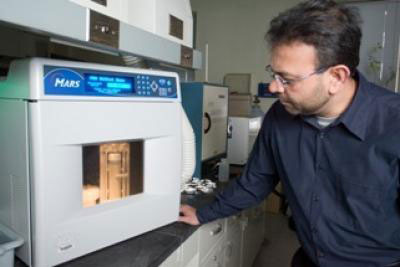 A faster, better and cheaper desalination process enhanced by carbon nanotubes has been developed by NJIT Professor Somenath Mitra. The process creates a unique new architecture for the membrane distillation process by immobilizing carbon nanotubes in the membrane pores. Conventional approaches to desalination are thermal distillation and reverse osmosis.
A faster, better and cheaper desalination process enhanced by carbon nanotubes has been developed by NJIT Professor Somenath Mitra. The process creates a unique new architecture for the membrane distillation process by immobilizing carbon nanotubes in the membrane pores. Conventional approaches to desalination are thermal distillation and reverse osmosis.
Mar 14th, 2011
Read more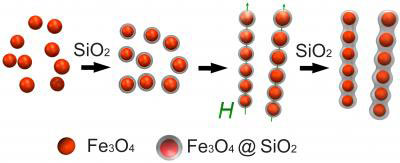 Chemists at the University of California, Riverside have developed tiny, nanoscale-size rods of iron oxide particles in the lab that respond to an external magnetic field in a way that could dramatically improve how visual information is displayed in the future.
Chemists at the University of California, Riverside have developed tiny, nanoscale-size rods of iron oxide particles in the lab that respond to an external magnetic field in a way that could dramatically improve how visual information is displayed in the future.
Mar 14th, 2011
Read moreProcesses at the atomic level are not only miniscule; they are often extremely fast and therefore, difficult to capture in action. But now, German scientists together with U.S. colleagues present techniques that take us a good step closer to producing an 'atomic movie'.
Mar 14th, 2011
Read more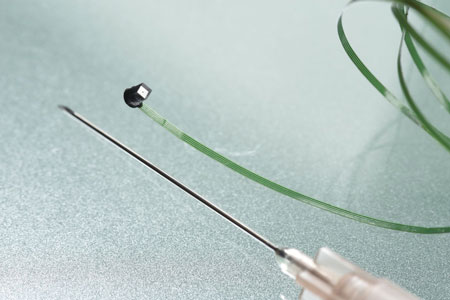 There have been gloves and shavers for one-off use for a long time. In future, there will also be disposable endoscopes for minimally invasive operations on the human body. A new microcamera is what makes it possible. It is as large as a grain of salt, supplies razor-sharp pictures and can be manufactured very inexpensively.
There have been gloves and shavers for one-off use for a long time. In future, there will also be disposable endoscopes for minimally invasive operations on the human body. A new microcamera is what makes it possible. It is as large as a grain of salt, supplies razor-sharp pictures and can be manufactured very inexpensively.
Mar 14th, 2011
Read moreMagnetic vortices show promise as data storage structures, however the vortex formation process imposes a lower limit on the element's size. Here, a technique is presented, which application increases the probability of nucleating of magnetic vortices in sub-micrometer sized soft magnetic thin film elements.
Mar 14th, 2011
Read more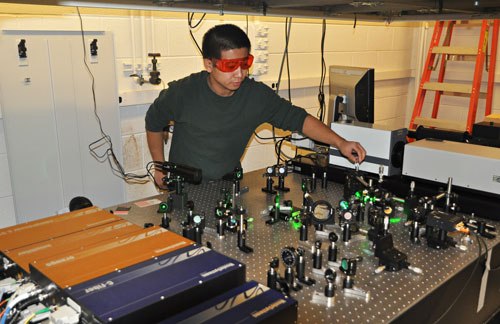 A two-year-old Air Force Office of Scientific Research Multidisciplinary University Research Initiative effort involving the University of Michigan, Stanford University, Brown University, and the University of California at Santa Cruz is making great strides in achieving a fundamental understanding of heat transfer at interfaces.
A two-year-old Air Force Office of Scientific Research Multidisciplinary University Research Initiative effort involving the University of Michigan, Stanford University, Brown University, and the University of California at Santa Cruz is making great strides in achieving a fundamental understanding of heat transfer at interfaces.
Mar 14th, 2011
Read morePhysicists of the Laboratory of Attosecond Physics at the Max Planck Institute of Quantum Optics succeeded in the first real-time observation of laser produced electron plasma waves and electron bunches accelerated by them.
Mar 14th, 2011
Read moreFrom childhood sweetheart to quantum electrodynamics, the life and scientific contributions of the legendary Richard Feynman, a physicist of mythic hero status, are given a new and stimulating perspective in a book by Arizona State University professor Lawrence M. Krauss.
Mar 14th, 2011
Read moreScientists with the Lawrence Berkeley National Laboratory (Berkeley Lab) have designed a new composite material for hydrogen storage consisting of nanoparticles of magnesium metal sprinkled through a matrix of polymethyl methacrylate, a polymer related to Plexiglas. This pliable nanocomposite rapidly absorbs and releases hydrogen at modest temperatures without oxidizing the metal after cycling - a major breakthrough in materials design for hydrogen storage, batteries and fuel cells.
Mar 13th, 2011
Read moreSMi is proud to present their Pharmaceutical Nanotechnology: Applications + Commercialisation conference, taking place in London on 29th and 30th June, 2011.
Mar 12th, 2011
Read moreThe Science Foundation Ireland funded centre CRANN has launched its public report for 2009-2010. The report highlights that CRANN, a Trinity College Dublin Institute founded in 2004, has continued to establish itself as a national and international force in nanoscience and nanotechnology research and collaborative industry engagement.
Mar 12th, 2011
Read more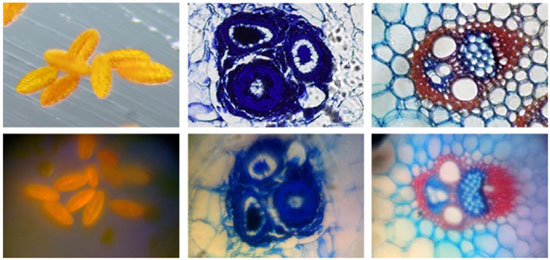 In a new, free-access paper in PloS one, researchers propose to take advantage of the rapid improvements in commercial CMOS sensors and microscopic optics driven by the cell-phone industry to develop two common biomedical devices, namely a microscope and spectrometer, that are available as simple and inexpensive add-ons to a commercial cell phone camera like Apple's iPhone.
In a new, free-access paper in PloS one, researchers propose to take advantage of the rapid improvements in commercial CMOS sensors and microscopic optics driven by the cell-phone industry to develop two common biomedical devices, namely a microscope and spectrometer, that are available as simple and inexpensive add-ons to a commercial cell phone camera like Apple's iPhone.
Mar 11th, 2011
Read moreMinute whiskers of nanoscale dimensions taken from sea creatures could hold the key to creating working human muscle tissue, University of Manchester researchers have discovered.
Mar 11th, 2011
Read more